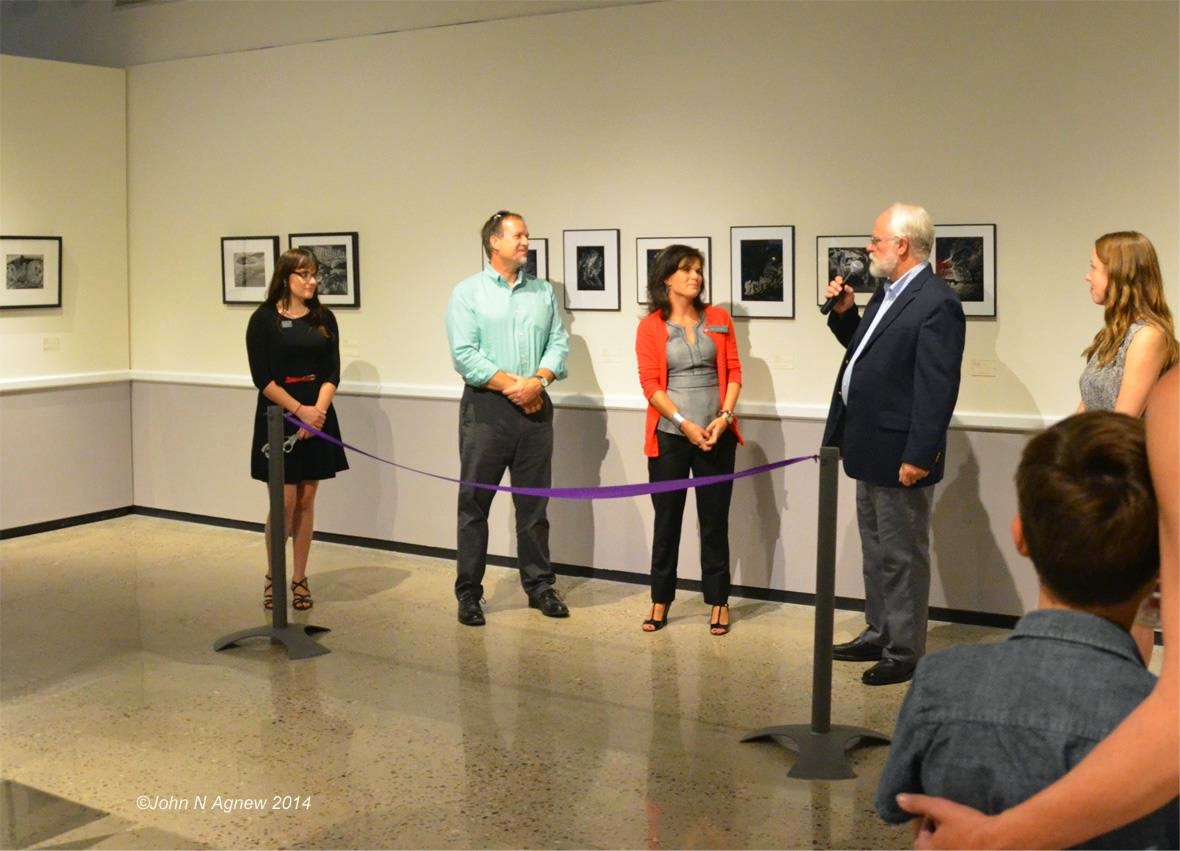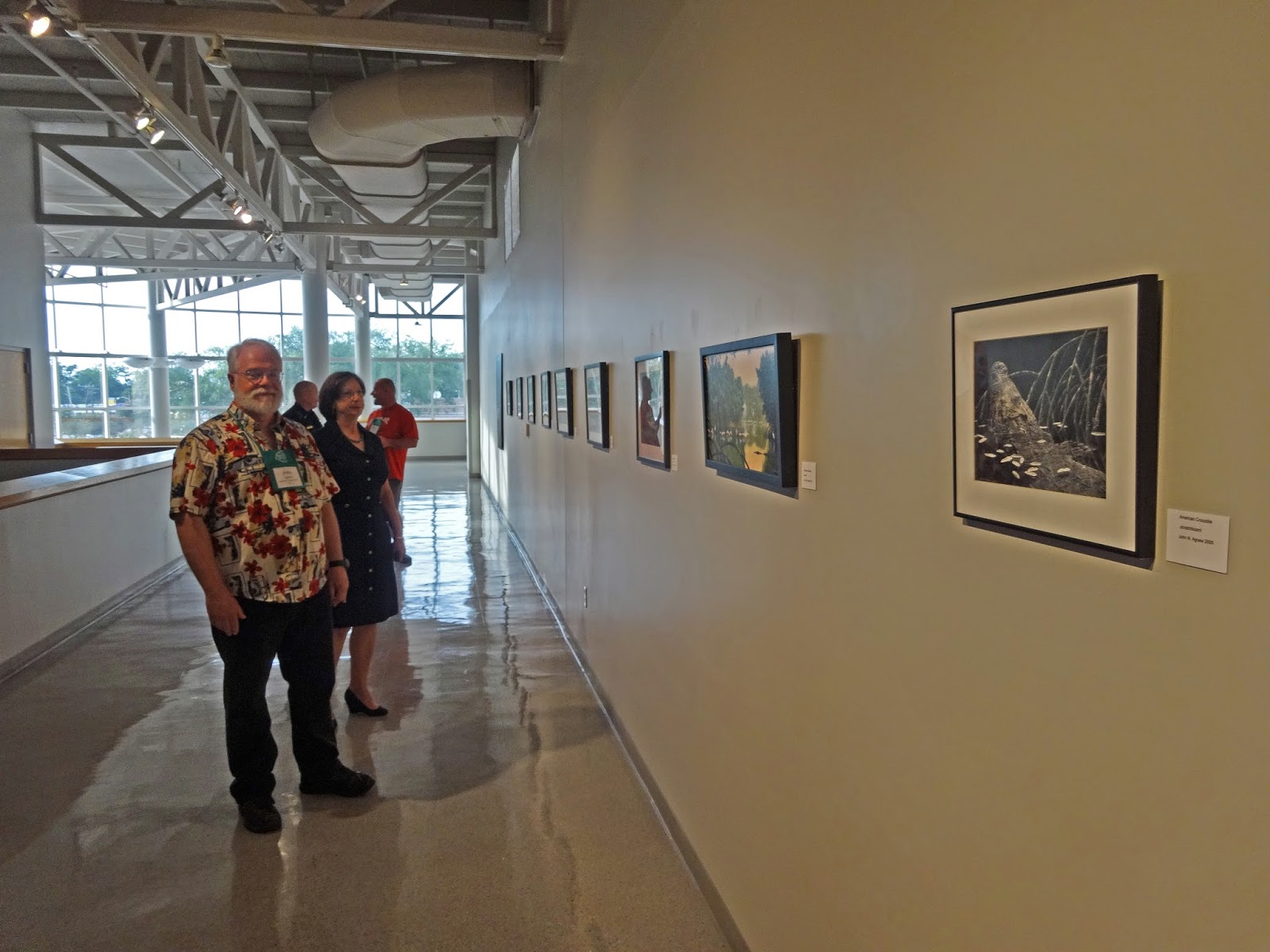Scratching for Crocodiles
 |
| "New Guinea Crocodile" 8x10 scratchboard |
On July 19 of 2014, my Crocodile Scratchboards exhibit opened its first venue at the Arizona-Sonora Desert Museum. A traveling exhibit produced and promoted by David J. Wagner, L.L.C., it has been a long time in production as my scratchboard technique is long and tedious. Artists used to producing impressionist plein aire pieces or abstract expressionist works would question my sanity, but I enjoy the results so much that I tough out the tedious process of scratching out my work one stipple or scratch at a time. It takes about six weeks to complete an 11 x 14 inch drawing. The exhibit at the ASDM is a preview, or cameo exhibit, in that it is not the completed crocodilian series. I have filled in with my scratchboard drawings of other subjects, including caves, troglobytic (cave-adapted) animals, and bats, all of which make excellent subjects for scratchboard. While at the ASDM I gave a three day workshop on my scratchboard techniques and acrylic painting methods at the museum's Art Institute.
 |
| Title wall for my scratchboard exhibit |
 |
| Opening ceremony at the ASDM |
 |
| A view of the installation at the ASDM |
 |
| My workshop group at ASDM's Art Institute |
In May of 2014, I also gave a small preview of my crocodile scratchboard art to the Crocodile Specialist Group who met in Lake Charles, Louisiana. It was somewhat nerve-wracking to present my work to the world's experts on the subject matter, but I seem to have passed my exam and my art was well received.
 |
| In Lake Charles, LA, with the Crocodile Specialist Group |
My interest in crocodilians goes way back to the Mesozoic period of my childhood, when I spent hours working out dramatic scenarios with my plastic dinosaurs. As an adult, I see Tyrannosaurus rex when I watch a living crocodile in battle with a rival or subduing a prey animal. Crocodiles were contemporaries of the dinosaurs, and even ate them for lunch. Although the giant dinos disappeared, leaving us with only the small avian dinosaurs that we call birds, crocodilians persist today in the giant scaly form reminiscent of our dinosaur fantasies.
 |
| "Crocodile Dreams" 11 x 14 scratchboard |
This is the source of my fascination, although their textures, forms and habitats excite my artistic imagination. I think that they make excellent subjects for scratchboard, a B&W, contrasty medium. Dramatic lighting works best with scratchboard subjects, making good use of the push and pull of black and white. Scratchboard artists use a variety of tools and techniques, but I keep it simple, using only a #11 Xacto blade in a handle. No steel wool, special tools or airbrush, I like the simple push and pull of white lines on black to create tone and value.
 |
| Morelet's Crocodile, 11" x 14" scratchboard |
The easiest place to find crocodilians is in zoos and alligator farms, but to get a real sense of how they live, it is best to visit them in their habitat. This means traveling long distances to places that are not the most comfortable for a northern hemisphere resident like myself. Swamps, rivers and lakes in the tropics are where you'll be likely to find crocodilians. I have visited caimans in the Amazon basin, giant Saltwater and Siamese crocs in Thailand and Malaysia, Tomistoma, a Slender-Snouted croc in Borneo, Nile crocs in Tanzania, Morelet's Crocodiles in Belize and of course, our resident American Alligator and American Crocodile in south Florida.
 |
| Hunting for Tomistoma crocs in Borneo |
 |
| Capturing Spectacled Caiman in the Peruvian Amazon |
Most of my reference material is in the form of photos. Doing plein aire sketching in tropical environments is not easy, due to the insects and heat. Still, I try to at least capture the flavor of the animals and habitat with sketches. Photographs fill in the detail for my accurate scratchboard renditions.
 |
| A sketch of alligators at the St. Augustine Alligator Farm in Florida |
The exhibit at the Arizona-Sonora Desert Museum is open until September 7, 2014. The premiere opening of the full Crocodilian Scratchboards exhibit, will be at the Museum of the Gulf Coast in Port Arthur, Texas, September 1- October 25, 2015, followed by the Coastal Discovery Museum in Hilton Head Island, South Carolina.
I would like to thank the Arizona-Sonora Desert Museum's Art Institute and its founder, Priscilla Baldwin, for making this exhibit possible. There are few venues of this quality available for exhibits of animal art. I would also like to thank David Wagner for curating and promoting the exhibit, taking on a subject matter that few would.
----John N Agnew
Exhibit produced by David J. Wagner, Ph.D., Curator/Tour Director
Exhibition Tour Office
Phone: (414) 221-6878 Email: davidjwagnerllc@yahoo.com
Website: davidjwagnerllc.com
My website for the Crocodilian Scratchboard exhibit:
http://johnnagnew.com/crocodilianscratcboards/crocodilian.html
More scratchboard art of mine:
http://johnnagnew.com/scratchboard_art.html

No comments:
Post a Comment